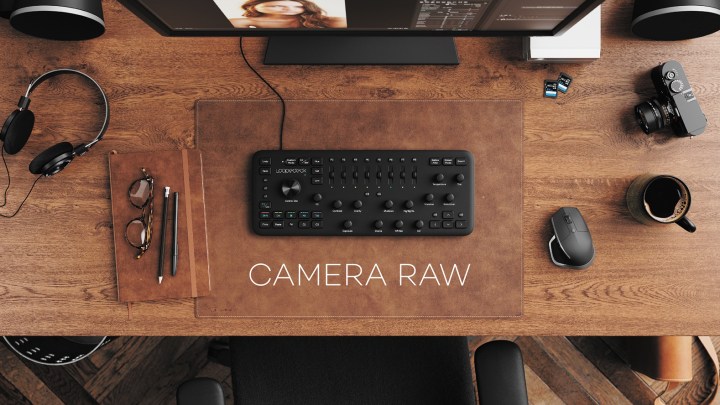
Loupedeck, the editing console originally designed for Lightroom, today continues its march to dominate multiple editing platforms with new integration with Adobe Camera RAW. On Wednesday, June 26, Loupedeck announced compatibility between Adobe Camera RAW and the Loupedeck Plus editing “keyboard.”
Loupedeck Plus uses physical dials, wheels and buttons to bring a more tactile — and sometimes faster — experience to photo editing. With today’s update, the accessory now works with Adobe Camera RAW, Adobe’s tool for converting and manipulating RAW files before working with the images inside of Photoshop.
With the integration, the Loupedeck Plus can work with all the basic adjustments inside Camera RAW, including exposure, contrast and temperature. Loupedeck’s color correction HSL (hue, saturation, luminance) tools are also compatible, along with tools for adjusting the tone curve. The Loupedeck Plus can also be programmed to adjust split toning, lens corrections, effects, and camera calibration.
After using the console, the images can then be further manipulated inside Adobe Photoshop, where the Loupedeck can be used to run actions, swap tools, work with layers and run filters.
“We value a customer experience that is always evolving to benefit our users most,” Mikko Kesti, founder and CEO of Loupedeck, said in a press release. “We’re looking forward to offering our users new Adobe product compatibility with Camera Raw, as it’s something many of them have been specifically asking for. We’re confident bringing this new integration into the mix will help them further increase their productivity with the Loupedeck Plus and provide the flexibility they require on a day-to-day basis.”
While originally designed for Lightroom, Loupedeck Plus now works with Adobe Premiere Pro CC, Adobe After Effects, Final Cut Pro, Adobe Audition, Adobe Photoshop, and Skylum Aurora HDR, and is in beta for Capture One. While some controls are pre-labeled to allow beginners to easily navigate the different options, the Loupedeck software allows the console to use a custom control scheme and adapt to the different programs.
The original Loupedeck launched after a successful 2016 crowdfunding campaign, later upgrading the console with the Loupedeck Plus. The company says the console improves the ergonomics of editing rather than navigating the controls with a keyboard and mouse.
Existing Loupedeck Plus users can gain the latest compatibility by updating the Loupedeck software. The Loupedeck Plus is available for a retail price of about $250.
Editors' Recommendations
- 5 image-editing apps you should use instead of Adobe Photoshop
- The best monitors for photo editing
- Goodbye, Split Toning — full Color Grading is coming to Lightroom
- Everything you can do in Photoshop for iPad, and what is still missing
- Photoshop for iPad finally has Edge Detection — here’s how to use it




